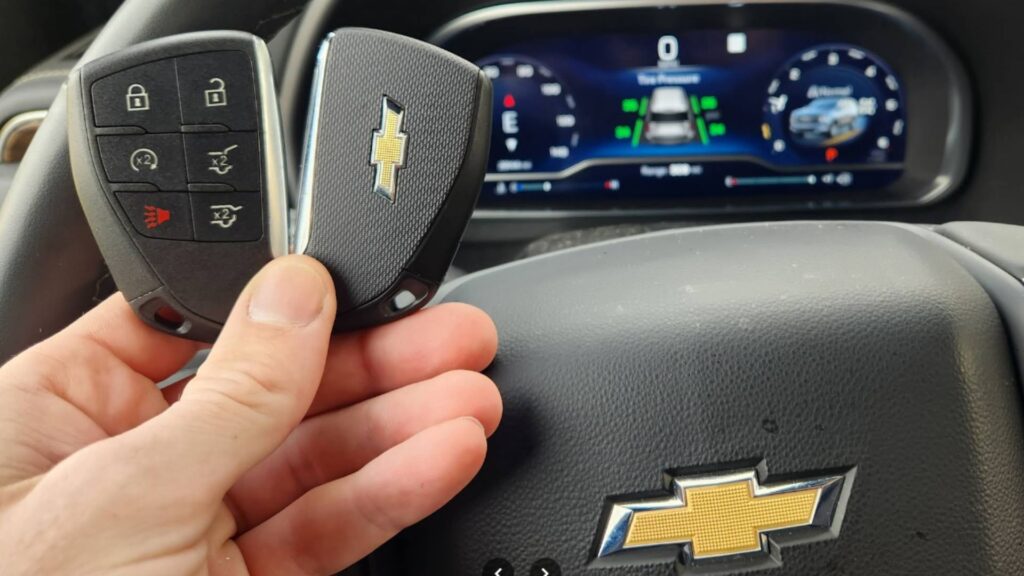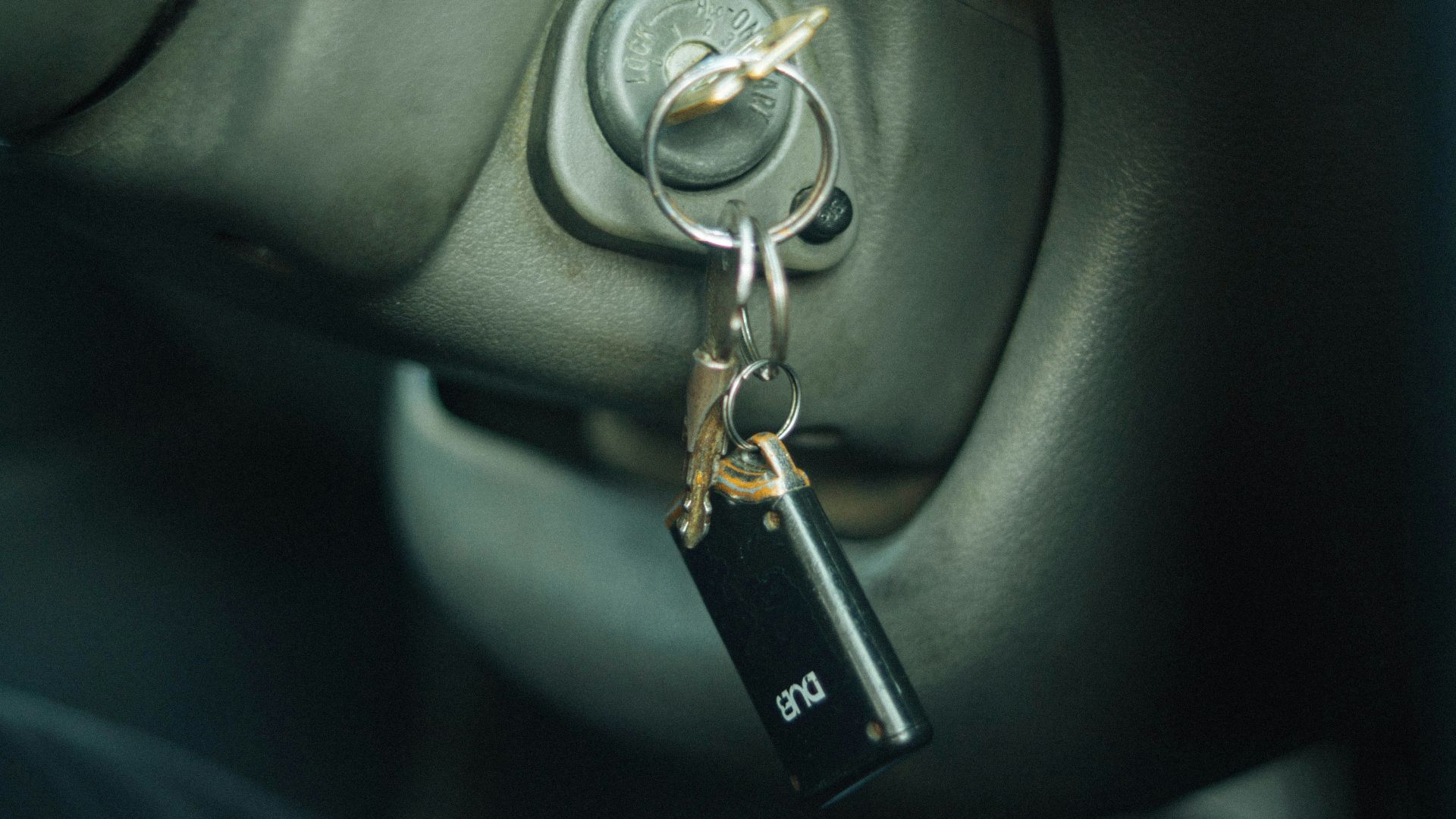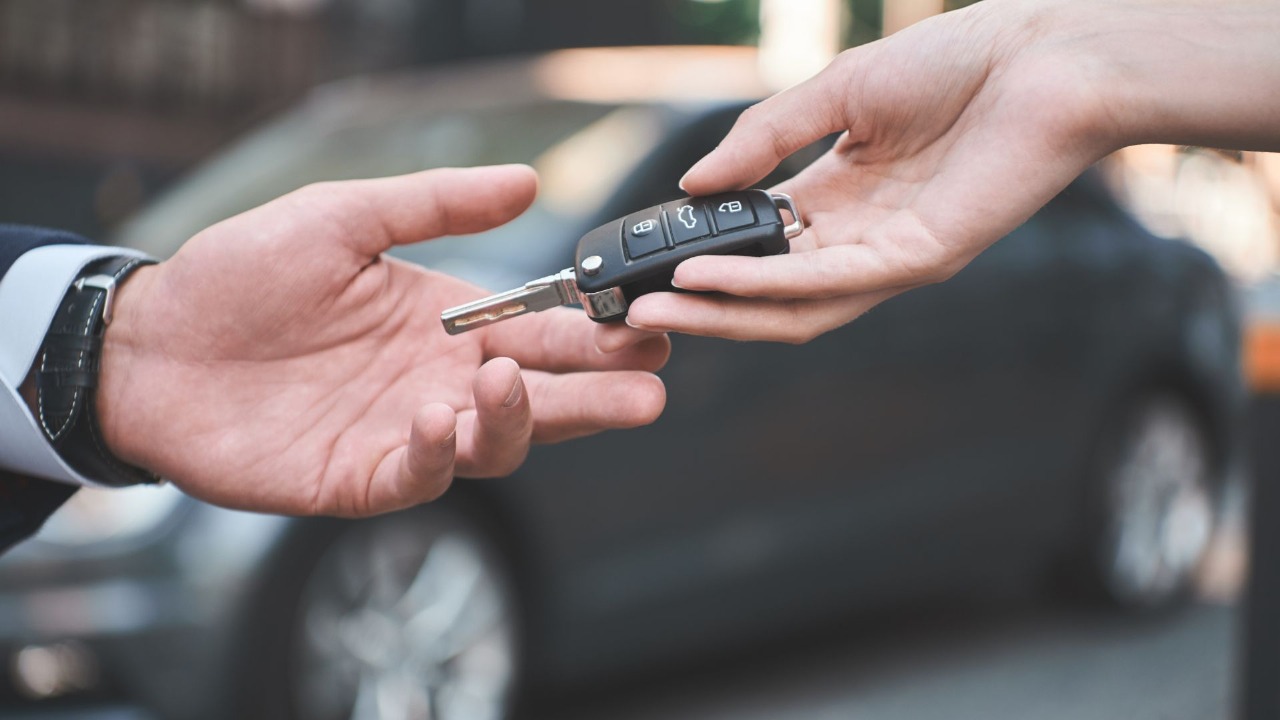
You’re walking out of the grocery store, bags in hand, and you press the unlock button on your car’s key fob. Your headlights flash, the doors click open, and you sigh in relief that you don’t have to juggle your bags while fiddling with a key. It feels effortless.
But here’s something most people don’t think about—key fob signals don’t have unlimited range. At some point, if you’re too far away, that handy little remote won’t respond at all. Maybe you’ve experienced it already: clicking the button several times, only to realize you need to walk closer before the car reacts.
This raises an important question: what’s the actual range limit for key fobs, and what factors can shorten—or sometimes extend—that range? At Affordable Car Keys, we get asked this all the time by customers who worry something might be wrong with their fob. The truth is, understanding key fob range isn’t just about curiosity—it can help you avoid unnecessary stress, troubleshoot issues, and even keep your vehicle secure.
Interest: How Key Fob Signals Work
Before diving into range limits, let’s look at how a key fob communicates with your car.
- Radio Frequency Technology: Most car key fobs operate on a short-range radio frequency (commonly around 315 MHz in North America or 433 MHz in other parts of the world). When you press a button, the fob sends a coded signal to the car’s receiver.
- Encrypted Communication: Modern vehicles use encrypted rolling codes, which means the signal changes each time you press the button. This makes it harder for thieves to intercept and copy your fob’s signal.
- One-Way vs. Two-Way Fobs: Traditional fobs only send signals to the car (unlock, lock, alarm). Advanced fobs, like smart keys or proximity fobs, can communicate both ways, letting your vehicle verify the signal automatically when you’re nearby.
In short, your fob isn’t magic—it’s a compact radio transmitter. And like all radios, it has limitations.
How Far Does a Key Fob Work?
On average, the effective range of most car key fobs is between 5 and 20 meters (16 to 65 feet). Some vehicles with premium systems, such as luxury brands, may extend up to 100 feet under ideal conditions, while older vehicles or low-power remotes may only cover a shorter distance.
That’s a pretty big range, but the number isn’t fixed. It’s influenced by several key factors—some you can control, others you can’t.
Factors That Affect Key Fob Signal Range
1. Battery Strength
The most common factor is also the simplest: your fob’s battery.
- Strong battery = strong signal.
- Weak battery = reduced range, delayed response, or inconsistent performance.
If you notice your car only unlocks when you’re standing close, it may be time to replace the fob’s coin battery.
2. Obstructions and Interference
Radio signals can be blocked, absorbed, or scattered by different obstacles.
- Buildings, walls, and parking garages can reduce your signal dramatically.
- Other cars in crowded lots can reflect or block signals.
- Metal surfaces are particularly challenging because they absorb and reflect radio waves.
- Electromagnetic interference from devices like radio towers, Wi-Fi routers, or even some electronic equipment in your pocket can weaken signals.
3. Design of the Car’s Receiver
Not all cars are built the same.
- Premium vehicles often have more powerful receivers designed to catch signals from a greater distance.
- Older cars or entry-level models may have receivers with a smaller effective range.
4. Key Fob Design and Frequency
Different manufacturers use different transmission strengths and frequencies.
- North American fobs (315 MHz) often have a slightly different range than European ones (433 MHz).
- Two-way systems (like remote start with feedback) often require stronger signals, which can extend or limit distance depending on design.
5. Environmental Conditions
Weather can play a role too.
- Rain, snow, and fog can absorb or scatter radio frequencies, reducing range.
- Cold temperatures can also affect battery output, making the signal weaker in winter.
6. User Behavior
Believe it or not, how you hold your fob matters.
- If your hand is covering the fob completely, your body can block some of the signal.
- Holding the fob higher, pointing it toward the car, or even placing it near your chin (a quirky but real trick) can sometimes boost range because your body acts as an antenna.
Why Knowing Key Fob Range Matters
You might be thinking, “Okay, so the range varies. Why should I care?” Here’s why understanding fob range—and the factors that affect it—can save you headaches and keep you safer.
- Troubleshooting Issues
If your key fob suddenly stops working at its normal range, it’s often just the battery. Instead of panicking and assuming your fob is broken or your car has a bigger issue, you’ll know the simple fix. - Preventing Lockouts
Imagine you’re carrying groceries and standing at the edge of your driveway. If your fob doesn’t respond, you may think something’s wrong. Knowing it’s just out of range helps you avoid unnecessary stress. - Security Awareness
Thieves sometimes use devices to amplify or block key fob signals. By understanding the normal range, you’ll notice if your fob is behaving strangely and take precautions, like storing it in a signal-blocking pouch at night. - Maximizing Convenience
Key fobs are designed to make life easier. Knowing what affects their performance means you can adjust how you use them—like replacing the battery regularly, holding them properly, or being mindful of interference zones.
Common Misconceptions About Key Fob Range
Let’s clear up a few myths we often hear from customers:
- “If my fob doesn’t work, it’s broken.”
Not always—most of the time, it’s just a weak battery. - “All key fobs work the same distance.”
Different cars, frequencies, and designs mean ranges vary. - “Weather doesn’t affect electronics like fobs.”
It can—especially when it comes to radio signals and cold battery performance. - “Signal boosters are always safe to use.”
Using unauthorized devices to extend range can interfere with your car’s security system. It’s best to consult a professional.
Action: What To Do if Your Key Fob Isn’t Working Properly
If you notice your fob’s range is shrinking, here’s a quick checklist:
- Replace the Battery – Most fobs use coin batteries (like CR2032). Replacing it is inexpensive and solves most range problems.
- Check for Interference – If your fob only struggles in certain locations (like a parking garage), interference is likely the cause.
- Inspect the Fob – Physical damage, water exposure, or worn-out buttons can reduce performance.
- Get Professional Help – If replacing the battery doesn’t help, your fob may need reprogramming or replacement.
At Affordable Car Keys, we specialize in diagnosing and fixing all types of car key and fob issues. From replacing weak batteries to programming new remotes, we help Winston-Salem drivers get back on the road with minimal stress.
Key fobs are one of those modern conveniences most of us take for granted—until they don’t work the way we expect. The truth is, their range is usually between 16 and 65 feet, but a variety of factors like battery life, obstructions, and interference can shorten or extend that distance.
Understanding these details not only helps you avoid unnecessary panic but also ensures you know when it’s time to seek professional help.
And when that time comes, remember: Affordable Car Keys is your trusted local car locksmith in Winston-Salem, NC. Whether it’s replacing a weak battery, repairing a damaged fob, or programming a new one, our team is here to keep your keys working as they should.
Need help with your key fob today? Call Affordable Car Keys now and get fast, affordable, and reliable locksmith service you can count on.
Affordable Car Keys
Serving Winston-Salem, Clemmons, Lewisville, NC & Surrounding Areas
(336) 365-0050



